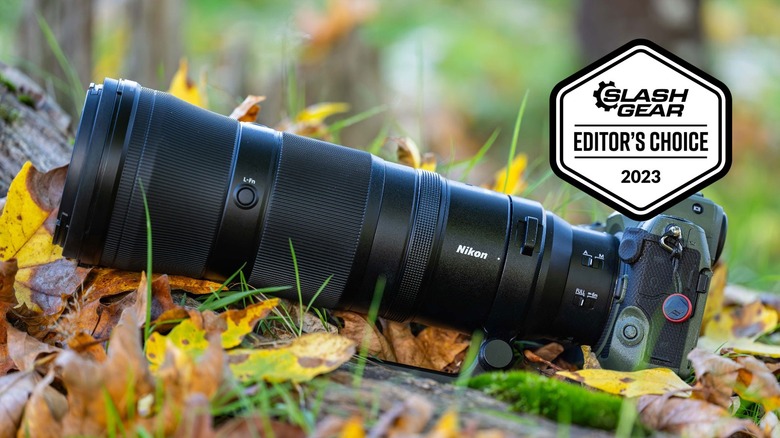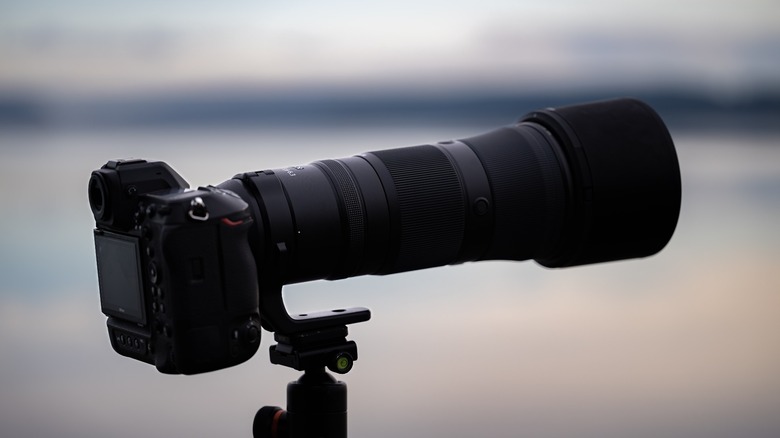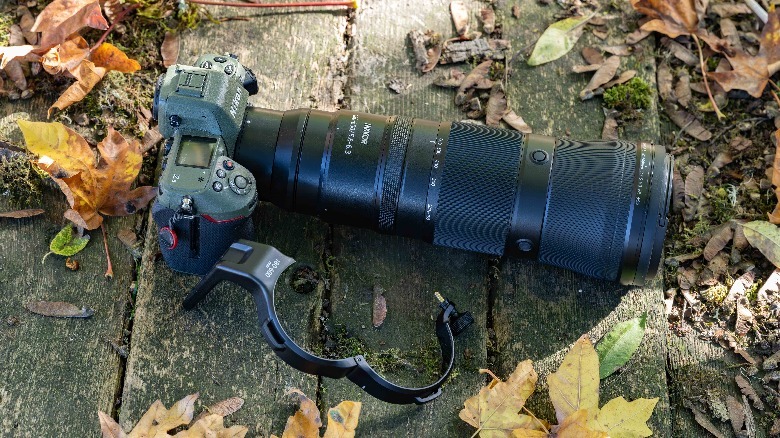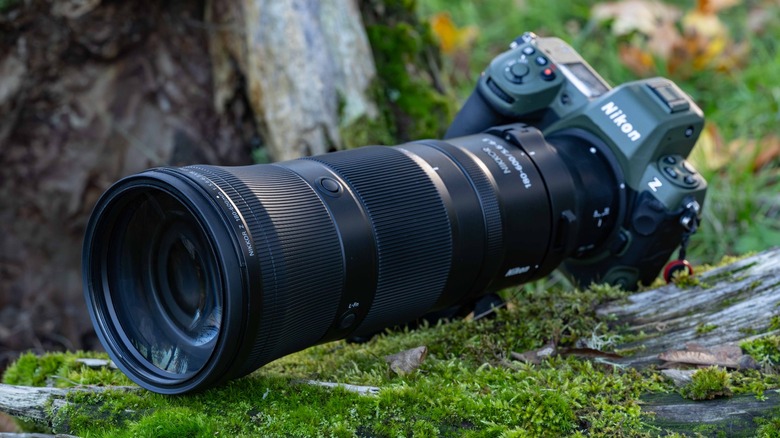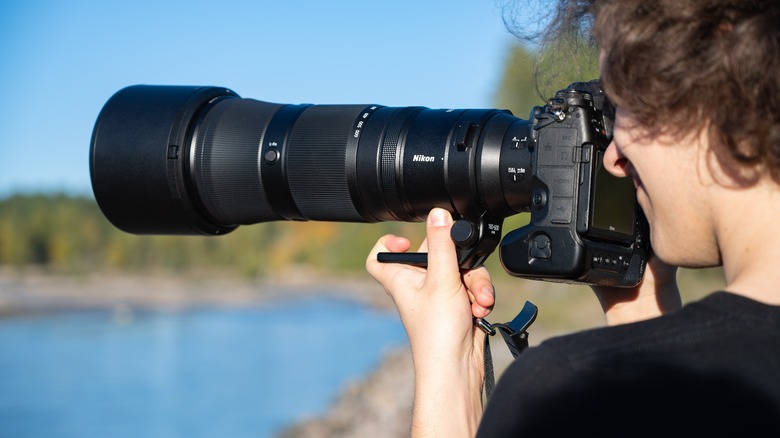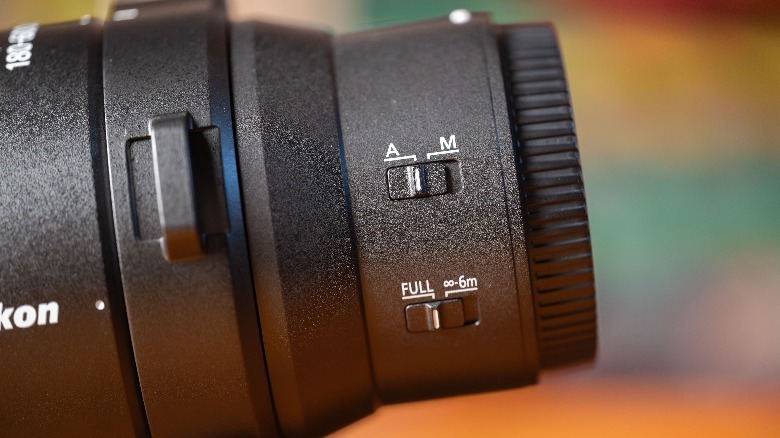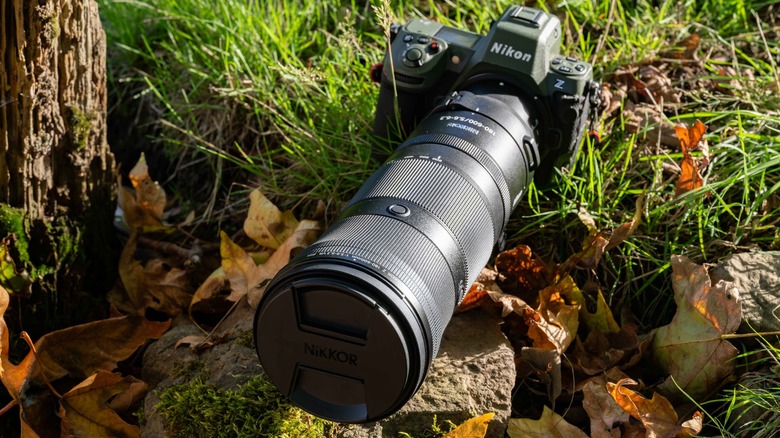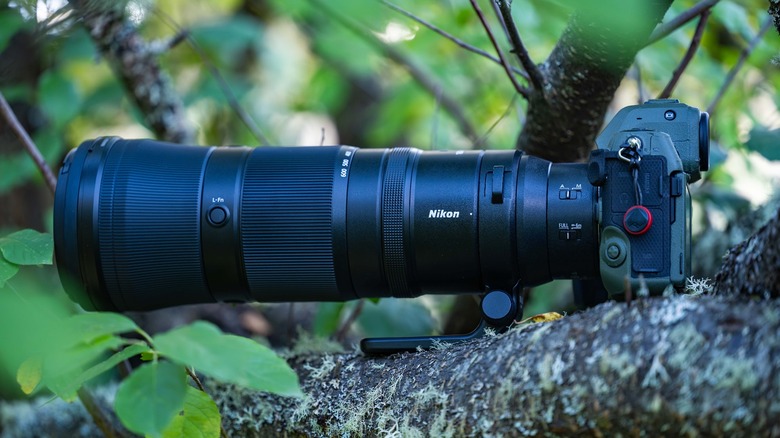Nikon Nikkor Z 180-600mm F/5.6-6.3 VR Review: One Highly Versatile Super-Zoom Lens
- Internal zoom prevents dust and moisture from entering the lens
- Good build quality
- Excellent image quality
- Versatile zoom range
- Great autofocus system
- Reasonably light and portable
- Great value
- No integrated Arca-Swiss tripod plate on lens foot
- Vibration reduction could be better
We may receive a commission on purchases made from links.
The Nikon Nikkor Z 180-600mm f5.6-6.3 VR is the latest in what has clearly become an aggressive push by Nikon to dominate the world of professional photography. This is a far more approachable piece of glass than the behemoth lenses that recently preceded it, and it follows in the footsteps of the venerable Nikkor 200-500mm F/5.6E ED VR.
With a range of 180-600mm, this lens is highly versatile, running from moderate to super telephoto. This is an ideal focal range if you're out on a walk and don't necessarily know what wildlife you may be photographing or at what distance. With some unique advantages and a relatively low price tag, this looks to be a highly enticing optic that will appeal to many photographers. We'll see if it turns out to be as competent in person as it is on paper. Much will depend on whether the 180-600mm can deliver the kind of superb image quality photographers demand from modern lenses.
Nikon provided a Nikkor Z 180-600mm f5.6-6.3 VR for the purposes of this review.
Awesome image quality
With a superzoom lens, you naturally expect to sacrifice some image quality compared to a prime lens, but with the Nikkor Z 180-600mm we were shocked by how well it performed in this regard. Our favorite super-telephoto lens is the Nikkor Z 800mm f/6.3 VR S, which is an incredible optic and a high bar for image quality that we would never have expected a budget-friendly zoom lens to even approach, yet the 180-600mm appears to be very nearly as sharp, with well-controlled distortion and vignetting. Color fringing is practically nonexistent, and the lens effectively handles flaring while shooting toward bright light sources.
The aesthetic look of images and video captured with the 180-600mm is superb as well, with images having good color and contrast, though, of course, the color science of Nikon's cameras is partly responsible for the good results here. Bokeh is very important for a lens where you will often seek to blur the background and foreground for wildlife portraiture, so it's good to see that the 180-600mm delivers pleasing bokeh (the quality of out-of-focus areas).
Despite the lack of the "S" branding, which delineates Nikon's higher-end lenses, the 180-600mm absolutely delivers S-line-level results.
The joys of an internal zoom lens
The standout feature of the Nikkor Z 180-600mm has to be the fact that, unlike other lenses with similar focal ranges, this one features an eternal zoom mechanism. This is important because when an external zoom lens goes in and out, it inevitably allows dirt and moisture to ingress, no matter how well sealed it may be. An internal zoom mechanism, however, allows the exterior of the lens to remain solid and unmoving, aside from the operation of the zoom and focus rings. Thanks to this, the Nikkor Z 180-600mm is particularly well suited to operation in inclement weather. Further weather sealing measures and an overall rugged construction make the 180-600mm a particularly durable lens. The 180-600mm was completely untroubled when shooting in light rain showers.
The lens includes a large lens hood and a removable tripod collar, which helps reduce the weight you're carrying if you're not going to need to mount it on a tripod. Unfortunately, the tripod foot does not have an integrated arca-swiss mount, something which is becoming increasingly common in third-party lenses, and which should be standard on all lenses like the 180-600mm.
The 180-600mm weighs just 4.39 pounds (1995 grams), so while it's no featherweight it was light enough for us to carry around and hold for long periods of time while waiting for an owl to take flight. Customizable buttons, as well as AF/MF and focus limiting switches are present on the lens itself.
Effective image stabilization and fast focus
Auto-focusing with the Nikkor 180-600mm is fast and fluid when coupled with the Nikon Z9, a camera equipped with one of the best auto-focus systems available. This was recently made even better by the Z9's 4.1 firmware update, which massively improved autofocus specifically for birds. The 180-600mm performed similarly to the massive Nikkor Z 800mm f6.3 VR S lens on the Z9, which is impressive given the significant price gap between these two optics.
In terms of vibration reduction (image stabilization), we were somewhat disappointed by the 180-600mm. It's unfair to compare it to the 800mm lens, but nonetheless, we did find it much more difficult to capture stable video at 600mm with the 180-600mm than with the 800mm. It still does a good job however, and we were able to capture sharp stills hand-held at shutter speeds as low as 1/100 at 600mm, so perhaps this is more a commendation of the 800mm's prowess than the deficiency of the 180-600mm.
With that said, both the 180-600mm and the 800mm are rated to 5.5 stops of VR, and our experience has not been that these two lenses share equal performance in this regard.
Ergonomics and close focusing capability
The Nikkor Z 180-600mm is both relatively portable and lightweight, while simultaneously being a big and heavy lens. Fortunately, it's rather good ergonomically — thanks to ample grip-friendly surfaces and an overall intelligent design. The zoom ring is large with a rubberized exterior and is located where your hands naturally fall on the lens. It has a short throw that is smooth and quick to go from 180mm to 600mm, but which is stiff enough that we never accidentally jostled it to a different position.
The focus limiter is a handy tool for speeding up autofocus. It works by preventing the lens from focusing at 6 meters and beyond. Speaking of close focus, the 180-600mm does a remarkably good job in this regard, being able to focus down to 0.25x at 180mm, which means you can get as close as 4.27 feet from your subject. It's not a macro lens by any means, but it will do for small subjects in a pinch.
The focus ring has a rough metallic surface which is distinct from the rubberized zoom ring. As opposed to the zoom ring, the focus ring has quite a long throw, which we found to be ideal for dialing in focus in the few situations where the autofocus wasn't quite up to the task.
In terms of balance, the 180-600mm paired very nicely with the Nikon Z9, but was definitely front-heavy when used with the Nikon Z8 or Nikon Z6.
A lot of lens for your money
At $1699.95, we can't really call the Nikkor Z 180-600mm (as sold by Nikon directly) a bargain, particularly given that other, more affordable options are available. Major lens maker (and Nikon competitor) Tamron just announced that its 150-500mm f/5-6.7 Di III VC VXD (Model A057) will soon be available for Z mount cameras, and it costs $500 less than Nikon's 180-600mm. Given this lens' excellent performance on other systems, the Tamron could be a good budget-friendly alternative, although it comes with enough caveats that the extra cost of the Nikkor Z 180-600mm is fully justified.
You could also always adapt a lens from another system, such as an old F mount lens for Nikon's DSLRs for roughly half the cost. However, as we've found, native Z-mount glass is definitely worth paying a premium.
Compared to Nikon's high-grade S line lenses, the 180-600mm is significantly cheaper. The next step up would be the Nikkor Z 100-400mm f/4.5-5.6 VR S, which costs $2499.95, and with that, you'd also need a 1.4x TC to get a similar range as the 180-600mm. The upcoming Nikkor Z 600mm f/6.3 VR S may be an option if you're looking for a step up to a high-end super-tele prime, but it'll set you back $4799.95, and while the Nikkor Z 800mm f/6.3 VR S gets you some more reach and is a historic bargain for an 800mm, its cost of $6499.95 is still a lot of money.
Conclusion
The Nikkor Z 180-600mm f5.6-6.3 VR is an impressive lens in many respects. It offers a highly useful zoom range, which is made all the more versatile by its excellent weather-sealing and desirable internal zoom mechanism. Paired with professional-level image quality, this is a lens that will appeal to a wide range of photographers. It's an ideal option for anyone looking for a super-telephoto lens for their Z mount system, but who can't drop over $2500 on such equipment. It's frankly astounding that with this lens you really won't be sacrificing imaging capability or build quality compared to more expensive optics.
For professional photographers who may not see price as an object, this lens may still appeal, given its versatility. The relatively lightweight and manageable size of the 180-600mm makes it a good secondary system for such folks to have in their kit just in case.
There are certainly still good reasons to opt for a more expensive S-line lens, and there are some good low-budget alternatives if $1699.95 is too much, but there's no doubt the Nikkor Z 180-600mm f5.6-6.3 VR is an impressive lens that many and varied photographers will want to add to their camera bags.
